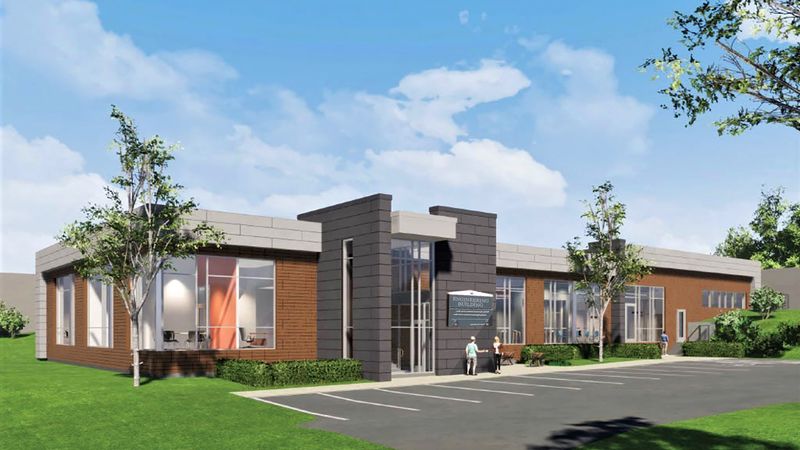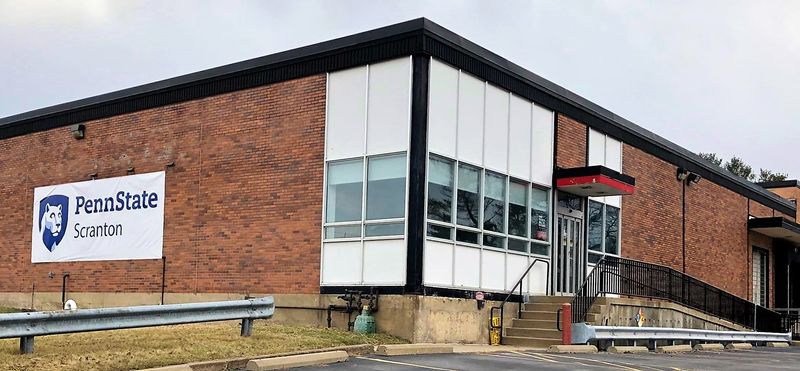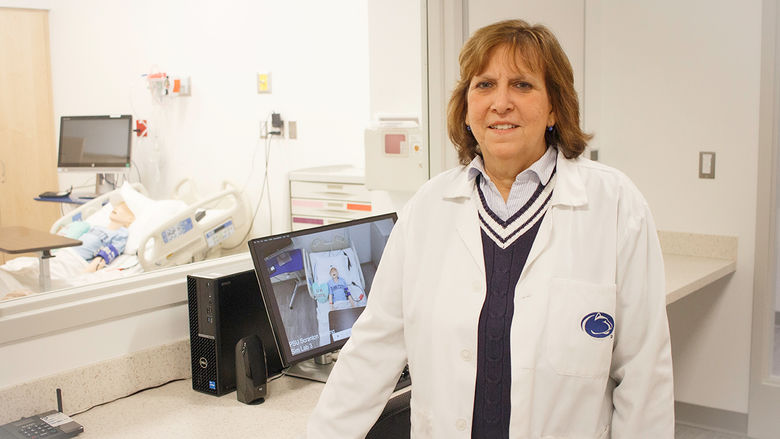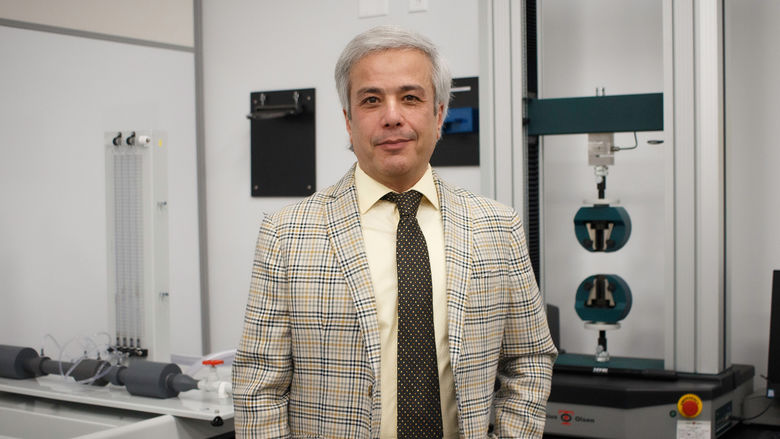

This dialog contains the full navigation menu for this site.

DUNMORE, Pa. – For many years, Penn State Scranton offered mechanical engineering students the chance to pursue the first two years of their coursework before heading off to University Park, or another commonwealth campus, to complete their degree.
Now, they no longer have to do that and can complete their bachelor of science in mechanical engineering (ME) in a brand new, ultra-modern, state-of-the-art facility.
Purchased by the campus in 2018, the building, formerly the Grainger industrial supply facility, is now undergoing a nearly $9 million renovation. In addition to the mechanical engineering program, it will house the Center for Business Development and Community Outreach (CBDCO) and the campus' Police and Public Safety office. And, its location along the O’Neill Highway will make for an enviable high-visibility presence for the campus.
Both the degree and the building are significant upgrades for the campus, according to Chancellor Marwan Wafa, Ph.D.
“We are very excited about bringing a bachelor of science in mechanical engineering to our community. It’s a Penn State degree in mechanical engineering, which is a highly regarded and respected program,” Wafa said. “Our students will now be able to complete their degree in a brand-new building with state-of-the-art engineering labs. It will be a very inviting space that will be a wonderful landmark for the community.”
New Program, New Facility
For the building’s design and inner components, the campus sought extensive input from mechanical engineering faculty and program coordinators at other campuses, according to Director of Business Services Gene Grogan.
“Basically, we asked them if they had a blank slate, what would they include and exclude from the building?” Grogan said. “With this information, we were able to then combine it with the other departments -- CBDCO and Police and Public Safety -- and their needs for the building.”
The new facility was outfitted with new utilities, two new entranceways and numerous natural light-enhancing windows.
Like any other University construction or renovation project, the building will feature energy-efficient systems such as natural gas for the building automation system (BAS), occupancy sensors to adjust temperature outputs, and LED lighting with motion sensors.
The campus also installed a new walkway between the Engineering and Dawson buildings that will provide optimal access for students, faculty and employees, Grogan noted.
“This much-needed connection will result in the elimination of some parking spaces, maintenance equipment storage and the service/access road to and from the maintenance building,” Grogan said.
“I think some of the more unique features are the study rooms, or ‘pods,’ along the main corridor where students can break out [and use] for individual or group study/work. There are actual engineering labs where faculty and students will work together on real-life projects, and a fabrication or ‘maker’ space where students will be able to work with local companies, helping them develop possible new products.”
“It will be a beautiful building,” Wafa added. “It’s amazing to see now, knowing how it looked before. It’s very exciting to see the development and change on a daily basis.”
Longtime campus engineering faculty members Dr. Majid Chatsaz, assistant professor of engineering, and Mostafa Tossi, assistant teaching professor in engineering, are very excited to be able to have the M.E. degree offered on campus and in such a modern setting.
“We are very excited to have the program up and running,” said Chatsaz, who also serves as mechanical engineering program coordinator. “We had been trying to get this program offered and approved for many years, and with Dr. Wafa’s relentless efforts it eventually became a reality.”
Strong Local Need
The campus’ path to launching the program started around 2016, when it hosted a regional engineering focus group meeting consisting of representatives from more than 15 regional companies and government agencies – among them Gentex, Lockheed Martin, PPL, Tobyhanna Army Depot and UGI – who indicated a strong need for mechanical engineers locally.
In addition, the Pennsylvania Center for Workforce Information and Analysis lists mechanical engineering among its high-priority occupations. And, the University itself has seen steady enrollment increases for its baccalaureate engineering programs in recent years.
With the program’s implementation, the campus hopes to expand opportunities for current students while attracting a new population of location-bound students who aspire to careers in mechanical engineering.
“We want to be able to have our graduates fill the regional market needs of area employers. So, I am very excited that we are able to launch a program where there is such a strong need,” Wafa said.
“We have had many location-bound students who have expressed the need for such a degree locally, and based on U.S. Department of Labor statistics there will be a great need for mechanical engineers in all industries, from medical to manufacturing to electronics,” Chatsaz added. “There is a reason that ME is called the mother of all engineering majors, because it has the widest exposure to all technical fields.”
“Whether it be the construction of new buildings, from the Gallagher Conference Center to the Business Building to the Engineering Building, or the complete renovations of the Dawson Building, or our athletic facilities upgrades, each project shows our students and the community our long-term commitment to providing a quality education to the people of NEPA,” Grogan said.
Architectural renderings and construction photos of the new Engineering Building at Penn State Scranton.

The former Grainger Building was purchased by Penn State Scranton in 2018 for the future home of the campus' mechanical engineering program. This year, construction started on the renovations to the new building, which is located along the O'Neill Highway in Dunmore, and will also house the campus' Center for Business Development and Community Outreach and Police and Public Safety.


